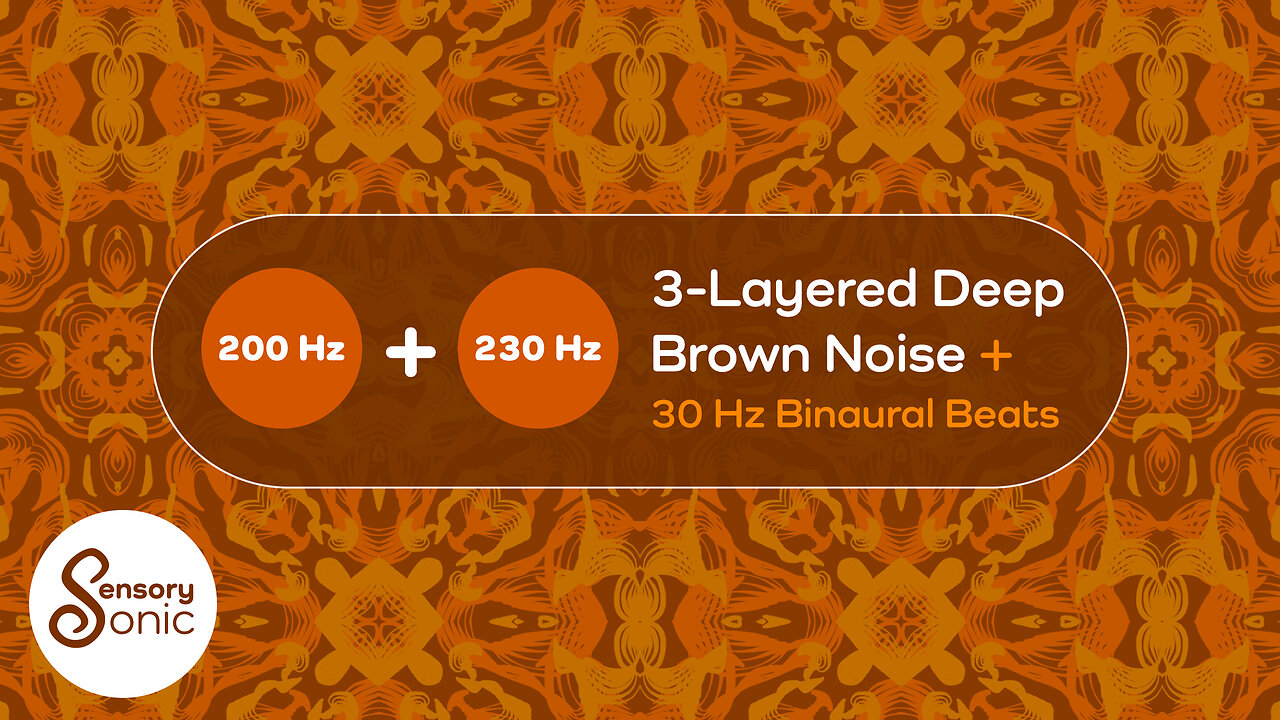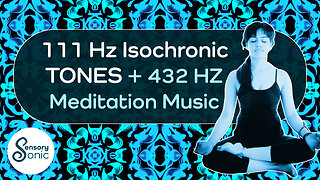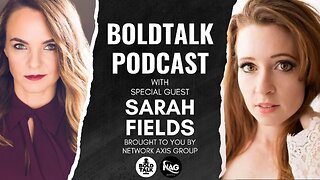Premium Only Content

30 Hz Binaural Beats With Multi-Layered Deep Brown Noise | Mask Noise and Boost Concentration
I've combined 30 Hz binaural beats with multi-layered brown noise to make a noise masking and concentration enhancing background sound. Made using 200 Hz + 230 Hz, 30 Hz is the borderline between beta and gamma which both enhance attention, focus and thinking skills.
#brownnoise #binauralbeats #brownnoisemeditation #brownnoisestudying #rednoise #30hz #gamma #beta #brainwaveentrainment #brainpower
---
Brown noise, also known as Brownian noise or red noise, is a type of random signal where the energy decreases as the frequency increases. It has a spectral density that decreases by 6 dB per octave (or 20 dB per decade). As a result, brown noise has more energy in the lower frequencies, which can be perceived as a deeper, smoother sound. It is often likened to the sound of a gentle waterfall or rolling thunder.
---
Binaural beats are a form of auditory illusion created by playing a slightly different frequency in each ear using headphones. When the brain processes these two frequencies, it perceives a third tone, known as the binaural beat, which has a frequency equal to the difference between the two input frequencies. This perceived beat is not actually present in the external environment but is a creation of the brain's processing.
The underlying principle behind binaural beats is called "brainwave entrainment." It suggests that the brain's electrical activity can be synchronized or entrained to external rhythmic stimuli, such as sound frequencies. Various frequencies of binaural beats correspond to different mental states, ranging from relaxation to focus and even deep meditation.
The benefits of binaural beats can vary from person to person. Some potential benefits reported by individuals include:
Relaxation and stress reduction: Binaural beats in the lower frequency range, such as delta (0.5-4 Hz) and theta (4-8 Hz), are associated with deep relaxation and can help reduce stress and anxiety.
Improved focus and concentration: Binaural beats in the alpha (8-13 Hz) and beta (13-30 Hz) ranges may enhance alertness, concentration, and cognitive performance. They may help with studying or for tasks requiring mental focus.
Sleep enhancement: Binaural beats in the delta range can promote sleep and reduce insomnia by helping to induce a state of deep relaxation and facilitating the transition into sleep.
Mood enhancement: Binaural beats may have mood-altering effects, promoting positivity, tranquility, or even euphoria.
It's important to note that scientific research on the effectiveness of binaural beats still needs to be expanded. While some studies suggest positive effects, the individual response to binaural beats can also vary, and some people may be more receptive than others.
Binaural beats are generally considered safe for most individuals when used correctly. However, there are a few considerations:
Potential discomfort: Some individuals may find certain frequencies or volume levels of binaural beats uncomfortable or irritating. Always listen at a comfortable volume.
Epilepsy and seizures: People with a history of epilepsy or seizures should exercise caution, as flashing lights or rapid auditory stimuli can trigger seizures in sensitive individuals.
Dizziness or lightheadedness: Occasionally, binaural beats may induce mild dizziness or lightheadedness in some individuals.
Remember that binaural beats should not replace medical treatment or professional advice for any health condition.
-
 1:00:00
1:00:00
Sensory Sonic
1 year ago111 Hz Isochronic Tones With 432 Hz Meditation Music | Sacred Healing Frequency Combination
826 -
 3:10:46
3:10:46
Ellie_roe
4 hours agoEllie and Errys Halloween Spooktacular || Random Horror Games
11K -
 50:27
50:27
Sarah Westall
6 hours agoBig Banks Caught Rigging Market, IMF tells World to “Buckle Up” w/ Andy Schectman
25.3K7 -
 13:54
13:54
Degenerate Jay
13 hours ago $0.91 earned5 Best Superhero Movies To Watch On Halloween
11.1K4 -
 59:03
59:03
NAG Podcast
6 hours agoSarah Fields: BOLDTALK W/Angela Belcamino
17.7K5 -
 1:21:41
1:21:41
Glenn Greenwald
8 hours agoGlenn Takes Your Questions: On the Argentina Bailout, Money in Politics, and More | SYSTEM UPDATE #541
76.8K38 -
 3:10:08
3:10:08
Barry Cunningham
6 hours agoPRESIDENT TRUMP TO USE NUCLEAR OPTION? FOOD STAMPS END! | SHUTDOWN DAY 31
45.2K31 -
 1:06:56
1:06:56
BonginoReport
13 hours agoThe Battle Between Good & Evil w/ Demonologist Rick Hansen - Hayley Caronia (Ep.168)
97.9K34 -
 1:12:57
1:12:57
Kim Iversen
8 hours agoBill Gates Suddenly Says “Don’t Worry About Climate Change”?
88.3K60 -
 1:05:12
1:05:12
Michael Franzese
8 hours agoI Waited 50 Years to Tell You What Happened on Halloween 1975
44K17